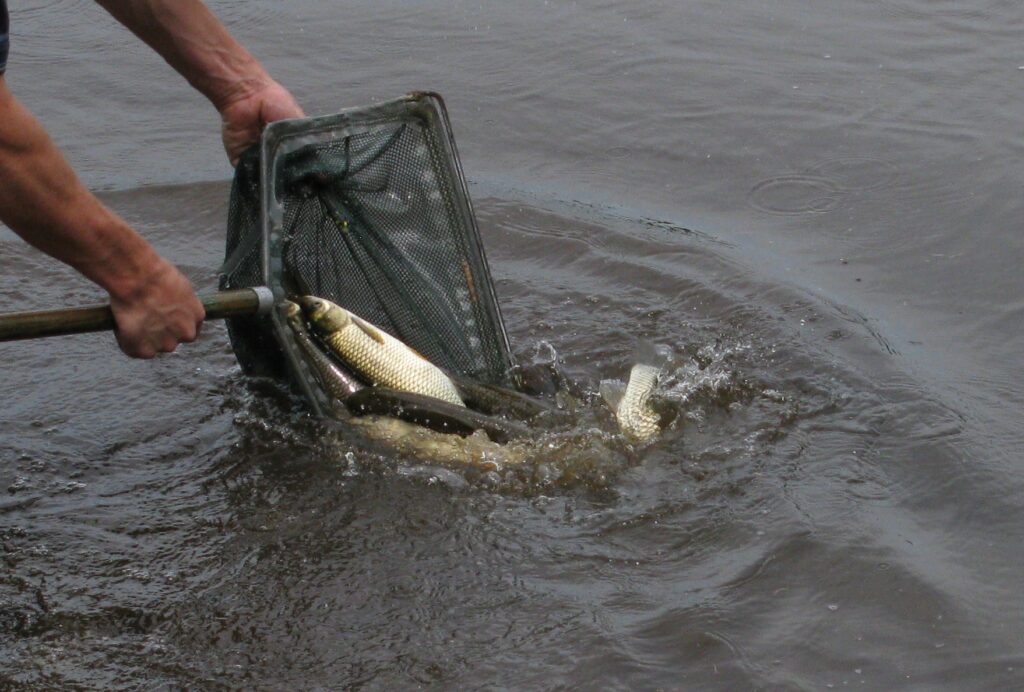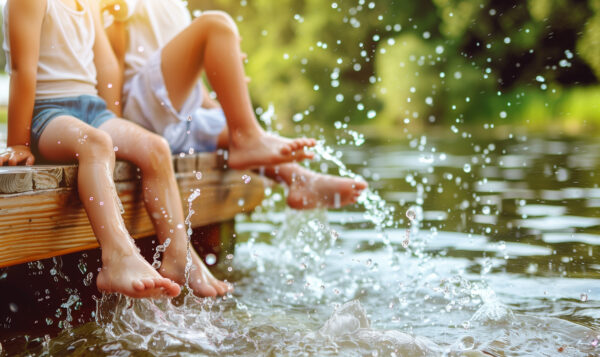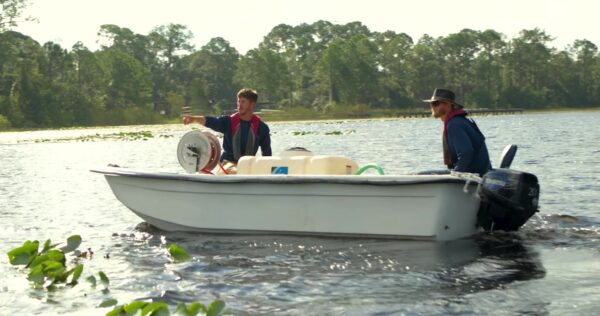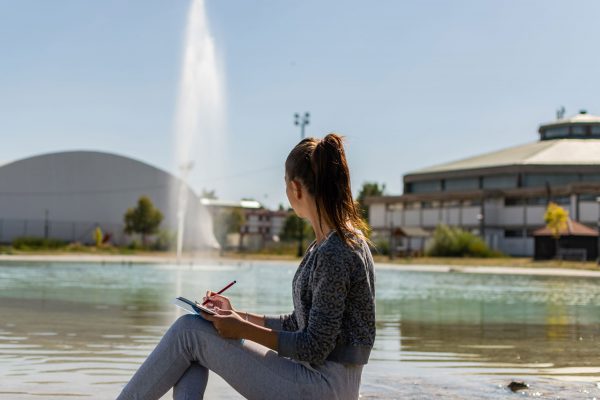
Is American Pondweed Good or Bad?
Picture this: you’re walking along the edge of your pond and notice long, leafy stems swaying gently beneath the surface. Small, oval-shaped leaves float near the top, forming patches of greenery across the water. Is this vibrant vegetation a boon for your pond’s ecosystem, or is it the first sign of a weed problem spiraling out of control?
The plant in question might be American pondweed (Potamogeton nodosus), a native aquatic species with complex benefits and downsides.
This blog will help you better understand its benefits and role in your pond and how to manage it when necessary.
What Is American Pondweed?
American pondweed is a submerged aquatic plant native to North America. It thrives in ponds, lakes, and slow-moving rivers, usually rooting itself in shallow, freshwater environments. It spreads through rhizomes below the surface and creates a network of stems and leaves that may remain underwater or float on top.
How to Identify American Pondweed
Here’s how to recognize American pondweed in your waterbody:
- Submerged Leaves: Long, ribbon-like leaves that wave gently beneath the surface.
- Floating Leaves: Small, oval-shaped leaves rise to the water’s surface.
- Roots: Grows from rhizomes in sediment, firmly anchoring the plant.
- Location: Found widely across North America in various aquatic environments.
While it is a native plant, American pondweed can resemble invasive species like curly-leaf pondweed. Accurately identifying the aquatic plants in your waterbody is the first step toward effective management.
Why American Pondweed Can Be a Good Thing
American pondweed can be a sign of a healthy, balanced pond when kept in check. Here’s why:
1. Supports Wildlife
The stems and leaves provide excellent habitat for fish, frogs, and aquatic insects, offering shelter, food, and spawning areas.
2. Improves Water Quality
Pondweed helps prevent turbidity by anchoring sediment and discourages poor water quality issues such as algal blooms, by absorbing excess nutrients that can fuel nuisance growth.
3. Native and Natural
Unlike invasive species, American pondweed fits naturally into aquatic ecosystems and rarely becomes dominant without other contributing factors.
Is American Pondweed Good or Bad for Ponds?
American pondweed is a native aquatic plant that supports water quality and fish habitat in moderate amounts. However, if it becomes overgrown, it can block recreation, crowd out native species, and require active management.
While it has many ecological benefits, knowing when to intervene is key to keeping your pond healthy and usable.
When American Pondweed Becomes a Problem
While American pondweed has ecological benefits, it doesn’t always stay in moderation. Under certain conditions, it can become a maintenance challenge for pond owners or managers.
Signs of Overgrowth
Here’s how to tell if American pondweed is becoming problematic:
- Formation of dense mats on the water’s surface, especially during late summer.
- Interference with recreational activities like swimming, boating, or fishing.
- Clogged irrigation systems or pumps.
- Displacement of native aquatic vegetation and potential oxygen depletion.
What Causes Pondweed to Overgrow?
Several factors can tip the balance and allow American pondweed to overrun your waterbody:
- Excess Nutrients: Fertilizer runoff and organic debris can fuel excessive growth.
- Warm, Shallow Water: Stagnant or slow-moving water creates ideal conditions for development.
- Lack of Maintenance: Without consistent management, pondweed can quickly become overgrown.
Even though it’s native, extreme growth can severely impair your pond’s usability and health.
How to Manage American Pondweed
If overgrowth becomes an issue, several effective strategies can be used to both manage American pondweed and maintain the ecological balance of your waterbody.
1. Hand Pulling
For more minor infestations, hand pulling is a simple and direct method.
- Use handheld tools like pond rakes or aquatic weed cutters to remove visible growth near the shoreline.
- Be sure to extract the entire plant, including the roots, as leftover rhizomes can quickly lead to regrowth.

2. Hydro-Raking
Hydro-raking is ideal for medium-sized infestations. This process uses a floating barge equipped with a large, powered rake to scoop and remove both plants and their rhizomes from the pond floor. It’s minimally disruptive to the surrounding ecosystem, making it a preferred method in more sensitive environments.
It’s important to note that American pondweed can spread through fragmentation. If pieces of the plant, like stems or shoots, break off, they can float to other areas of the waterbody and establish new root systems.

3. Mechanical Harvesting
Mechanical harvesting is best suited for large-scale infestations or areas with heavy plant growth. This method uses specialized aquatic machines equipped with cutting and conveyor systems to slice and collect vegetation in bulk—much like an underwater lawn mower.
While effective at removing large amounts of biomass quickly, harvesting primarily targets surface and mid-water growth and may not fully remove root systems. Follow-up treatments may be needed to prevent regrowth from remaining rhizomes.

4. Biological Control with Grass Carp
Triploid grass carp can be introduced to ponds in states where they are permitted. These fish consume pondweed over time, providing a sustainable control option. However, careful management is essential to prevent them from overgrazing or disturbing other aquatic plants.

5. Herbicide Application
When other methods aren’t practical, licensed professionals can apply EPA-approved aquatic herbicides to target American pondweed. Herbicide treatments are highly effective at targeting undesirable aquatic vegetation while leaving non-target species unharmed.. To ensure safe and precise applications, it’s essential to follow label guidelines and work with a trained expert.
Long-Term Prevention
Management doesn’t stop with removal. You’ll want to implement strategies that limit conditions supporting excessive pondweed growth:
- Reduce Nutrient Runoff: Create buffer zones around your pond to help filter out excess nutrients that come from fertilizers and debris.
- Encourage Water Movement: Use aerators to improve circulation in stagnant areas.
- Manage Abundant Nutrient Levels: Implement nutrient remediation solutions to help reduce phosphorus and nitrogen levels.
- Regular Monitoring: Check for early signs of overgrowth so you can act before it becomes severe.
Each pond is unique, so a customized plan can ensure effective management that aligns with your waterbody’s specific needs.
Should You Keep Some Pondweed?
Eliminating all American pondweed isn’t necessary or beneficial. The key lies in finding the right balance based on your pond’s purpose and your aesthetic preferences.
Tailored Solutions for Your Pond
At SOLitude Lake Management, we believe in solutions designed around your pond’s unique characteristics and needs. From assessments to treatment plans, our team of experts can help you establish the right balance of vegetation for your goals.
Key Takeaways
- American pondweed is a native plant that offers ecological benefits, including habitat support and water quality improvement.
- Overgrowth can interfere with pond usability, disrupt native diversity, and lead to oxygen depletion.
- Safe management options include manual removal, hydro-raking, grass carp, and herbicide application,
- Prevention is key to reducing overgrowth, with regular monitoring, nutrient control, and water movement strategies.
- The goal is to maintain pondweed’s benefits without overwhelming your pond.
Want Help Restoring Balance?
If you’re unsure whether your pondweed is under control or how to begin a management plan, SOLitude’s team of aquatic experts is here to help. Contact us today to learn more about customized solutions that prioritize your pond’s health and goals.
Pondweed and Algae Control Services In Action
SOLitude Lake Management is a nationwide environmental firm committed to providing sustainable solutions that improve water quality, enhance beauty and preserve natural resources.
SOLitude’s team of aquatic scientists specializes in the development and execution of customized lake, stormwater pond, wetland and fisheries management programs. Services include water quality testing and restoration, algae and aquatic weed control, installation and maintenance of fountains and aeration systems, shoreline erosion control, muck and sediment removal and invasive species management. SOLitude partners with homeowners associations, golf courses, private landowners, businesses and municipalities. SOLitude Lake Management is part of Rentokil, a leading business services company, operating across the United States, Canada and Puerto Rico.
For more information, visit SOLitude Lake Management at solitudelakemanagement.com, and connect on Facebook, LinkedIn, Twitter, Instagram and YouTube.









